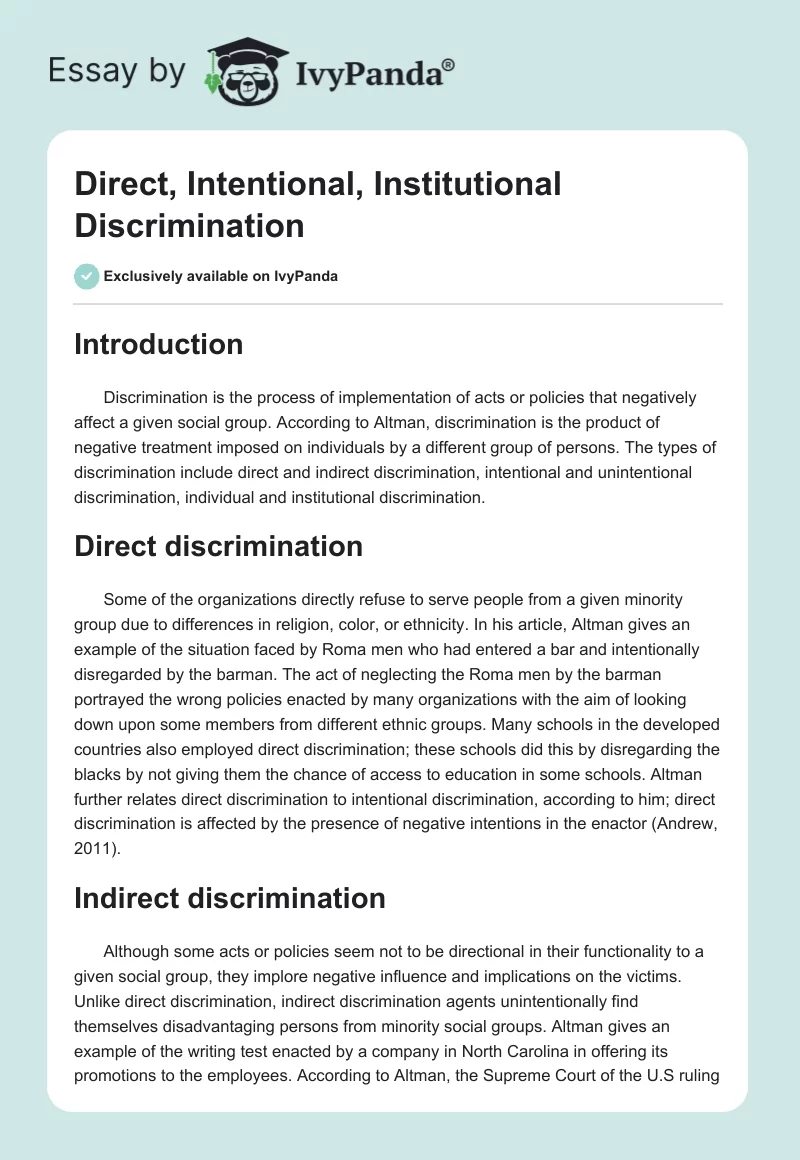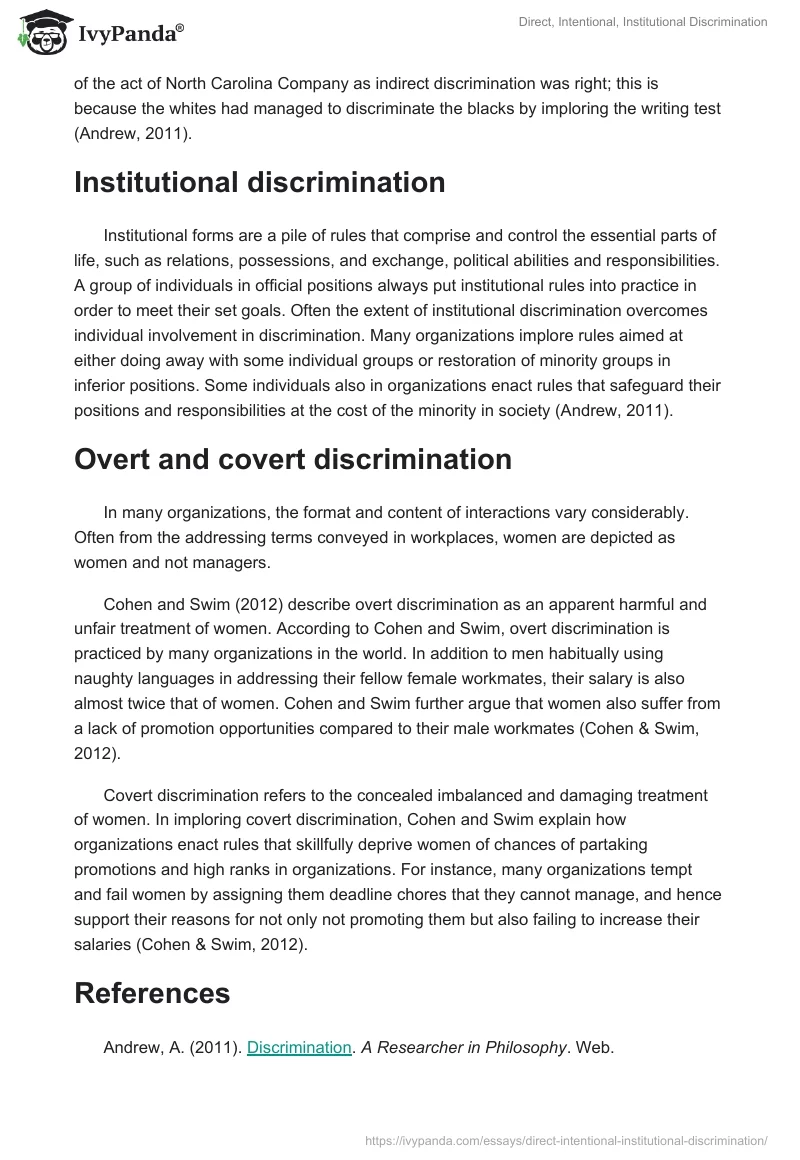Introduction
Discrimination is the process of implementation of acts or policies that negatively affect a given social group. According to Altman, discrimination is the product of negative treatment imposed on individuals by a different group of persons. The types of discrimination include direct and indirect discrimination, intentional and unintentional discrimination, individual and institutional discrimination.
Direct discrimination
Some of the organizations directly refuse to serve people from a given minority group due to differences in religion, color, or ethnicity. In his article, Altman gives an example of the situation faced by Roma men who had entered a bar and intentionally disregarded by the barman. The act of neglecting the Roma men by the barman portrayed the wrong policies enacted by many organizations with the aim of looking down upon some members from different ethnic groups. Many schools in the developed countries also employed direct discrimination; these schools did this by disregarding the blacks by not giving them the chance of access to education in some schools. Altman further relates direct discrimination to intentional discrimination, according to him; direct discrimination is affected by the presence of negative intentions in the enactor (Andrew, 2011).
Indirect discrimination
Although some acts or policies seem not to be directional in their functionality to a given social group, they implore negative influence and implications on the victims. Unlike direct discrimination, indirect discrimination agents unintentionally find themselves disadvantaging persons from minority social groups. Altman gives an example of the writing test enacted by a company in North Carolina in offering its promotions to the employees. According to Altman, the Supreme Court of the U.S ruling of the act of North Carolina Company as indirect discrimination was right; this is because the whites had managed to discriminate the blacks by imploring the writing test (Andrew, 2011).
Institutional discrimination
Institutional forms are a pile of rules that comprise and control the essential parts of life, such as relations, possessions, and exchange, political abilities and responsibilities. A group of individuals in official positions always put institutional rules into practice in order to meet their set goals. Often the extent of institutional discrimination overcomes individual involvement in discrimination. Many organizations implore rules aimed at either doing away with some individual groups or restoration of minority groups in inferior positions. Some individuals also in organizations enact rules that safeguard their positions and responsibilities at the cost of the minority in society (Andrew, 2011).
Overt and covert discrimination
In many organizations, the format and content of interactions vary considerably. Often from the addressing terms conveyed in workplaces, women are depicted as women and not managers.
Cohen and Swim (2012) describe overt discrimination as an apparent harmful and unfair treatment of women. According to Cohen and Swim, overt discrimination is practiced by many organizations in the world. In addition to men habitually using naughty languages in addressing their fellow female workmates, their salary is also almost twice that of women. Cohen and Swim further argue that women also suffer from a lack of promotion opportunities compared to their male workmates (Cohen & Swim, 2012).
Covert discrimination refers to the concealed imbalanced and damaging treatment of women. In imploring covert discrimination, Cohen and Swim explain how organizations enact rules that skillfully deprive women of chances of partaking promotions and high ranks in organizations. For instance, many organizations tempt and fail women by assigning them deadline chores that they cannot manage, and hence support their reasons for not only not promoting them but also failing to increase their salaries (Cohen & Swim, 2012).
References
Andrew, A. (2011). Discrimination. A Researcher in Philosophy. Web.
Cohen, L. & Swim, J. (2012). Overt, Covert, And Subtle Sexism. A Comparison Between the Attitudes Toward Women and Modern Sexism Scales. Web.


